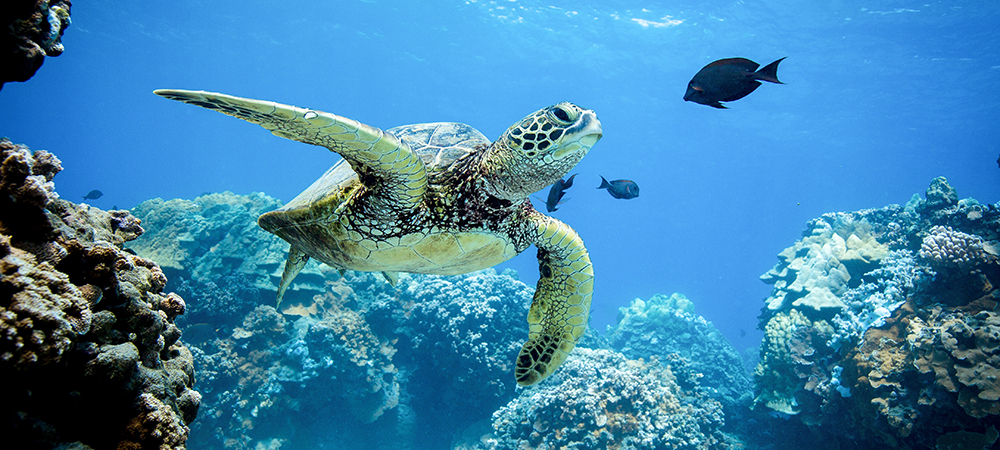UNC Center for Galapagos Studies joins forces with analytics and AI leader to boost conservation and sustainability efforts.
As an organization dedicated to responsible innovation and using technology to ignite positive change, SAS will apply crowd-driven Artificial Intelligence (AI) and Machine Learning to help protect endangered sea turtles.
Similar to SAS’ recent project to help track deforestation in the Amazon, the analytics leader is now working with the UNC Center for Galapagos Studies (CGS) to further research in several initiatives on the Islands. UNC CGS joined analytics leader SAS to analyze data and gather insights that will help them understand similarly challenged environments around the world.
Through an app called ConserVision, citizen scientists are invited to match images of turtles’ facial markings to help train a SAS computer vision model. Once the model can accurately identify turtles individually, researchers will have valuable information more quickly to better track each turtle’s health and migratory patterns over periods of time. The goal is that in the future the model can perform facial recognition on any sea turtle image, whether it comes from a conservation group or a vacationing tourist.
Sarah Hiser, MSc, Principal Technical Architect, SAS, said: “As our challenges as a global community become increasingly more complex, we need dynamic ways to access and use information to ramp up conservation efforts. By using technology like Analytics, AI and Machine Learning to quantify the natural world, we gain knowledge to help protect ecosystems and tackle climate change.”
In addition to turtles, the Galapagos Islands are home to many unique species not found anywhere else on Earth. An ecological haven for researchers since Charles Darwin first set foot there in 1835, they are also home to the Galapagos Science Center, a research facility jointly run by UNC-Chapel Hill and the Universidad San Francisco de Quito in Ecuador.
“For over 10 years, the Galapagos Science Center has hosted exceptional scientists doing innovative research that increases our understanding of the environment and results in positive real-world outcomes,” explained Dr. Penny Gordon-Larsen, Interim Vice Chancellor for Research, UNC-Chapel Hill.
“This innovative public-private partnership with SAS will enhance the center’s capacity for analyzing data that will positively impact both the environment and the people who inhabit these magnificent islands.”
As the only university science facility of its kind in the archipelago, the Galapagos Science Center opened in 2011 on San Cristobal Island to support interdisciplinary studies on population, health and environment by examining the social, terrestrial and marine subsystems of the islands.
The Galapagos Initiative is designed to foster research, education and outreach programs with the larger goals of advancing conservation efforts in the Galapagos and promoting a better understanding of ecologically sensitive and protected areas worldwide. Ultimately, the Galapagos Science Center aims to ensure healthy island ecosystems for future generations.


